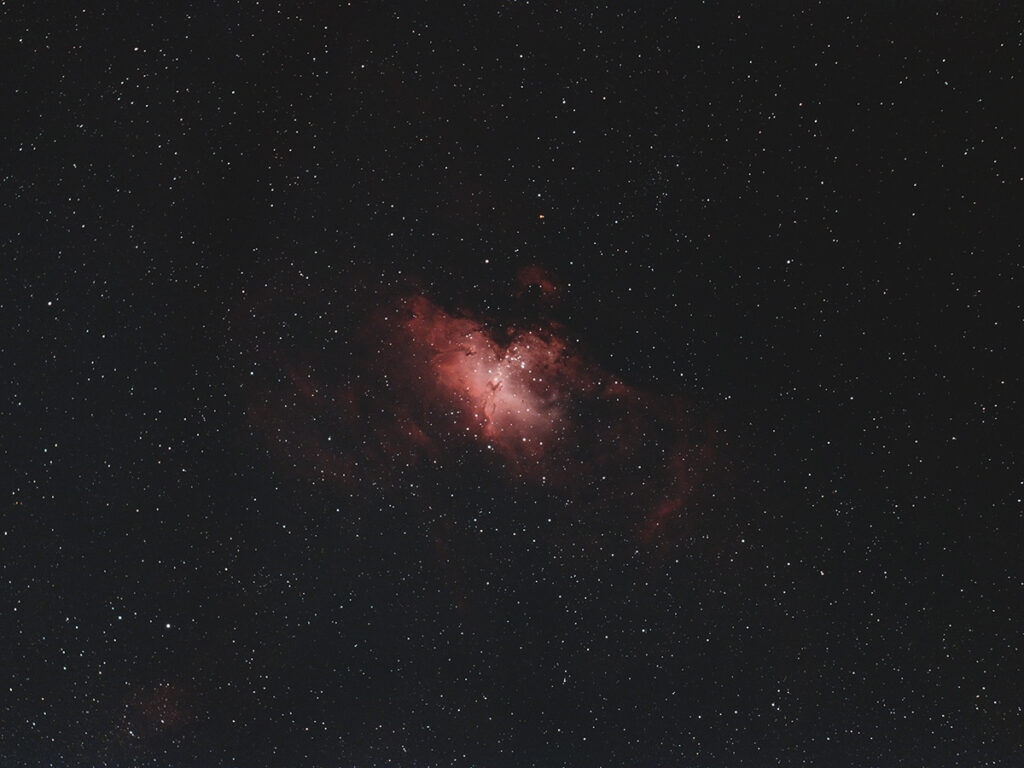
Telescope: ES Comet Hunter MN6 at f/4.8, Orion Atlas EQ-G
Camera: Baader modified Nikon 610
Filter: 2” Radian Triad Ultra Hb, OIII, Ha, SII filter
Guide scope: Williams Optics 50mm, ASI290MM mini, PHD
Exposure: 10x120sec, ISO 400, saved as RAW
Darks: Internal (Long Exposure Noise Reduction On)
Flats: 64×1/5sec, tee shirt flats taken at dusk
Average Light Pollution: Red zone, Bortle 8, poor transparency, clouds
Lensed Sky Quality Meter: 18.4
Stacking: Mean with a 1-sigma clip.
White Balance: Nebulosity Automatic
Software: Backyard Nikon, Nebulosity, Deep Sky Stacker, Photoshop
M16 is actually the cluster in the upper right section of the nebula. The nebula is very subtle and can be difficult to see visually, though it shows well under dark skies. The name, the Eagle Nebula, comes from the dark lanes in the middle which resembles an eagle grasping a fish. These dust lanes are also the famous ‘pillars of creation’ imaged by the Hubble Space Telescope. The nebula is a beautiful expanse of interstellar hydrogen set aglow from young stars embedded within it. M16 lies in the Sagittarius-Carina arm of the Milky Way, the next arm inwards from ours towards the core of our galaxy, so you are looking across the gap between adjacent spiral arms.
M17 is currently well placed in the southeast late in the evening and is high in the south after midnight.
Recent Comments